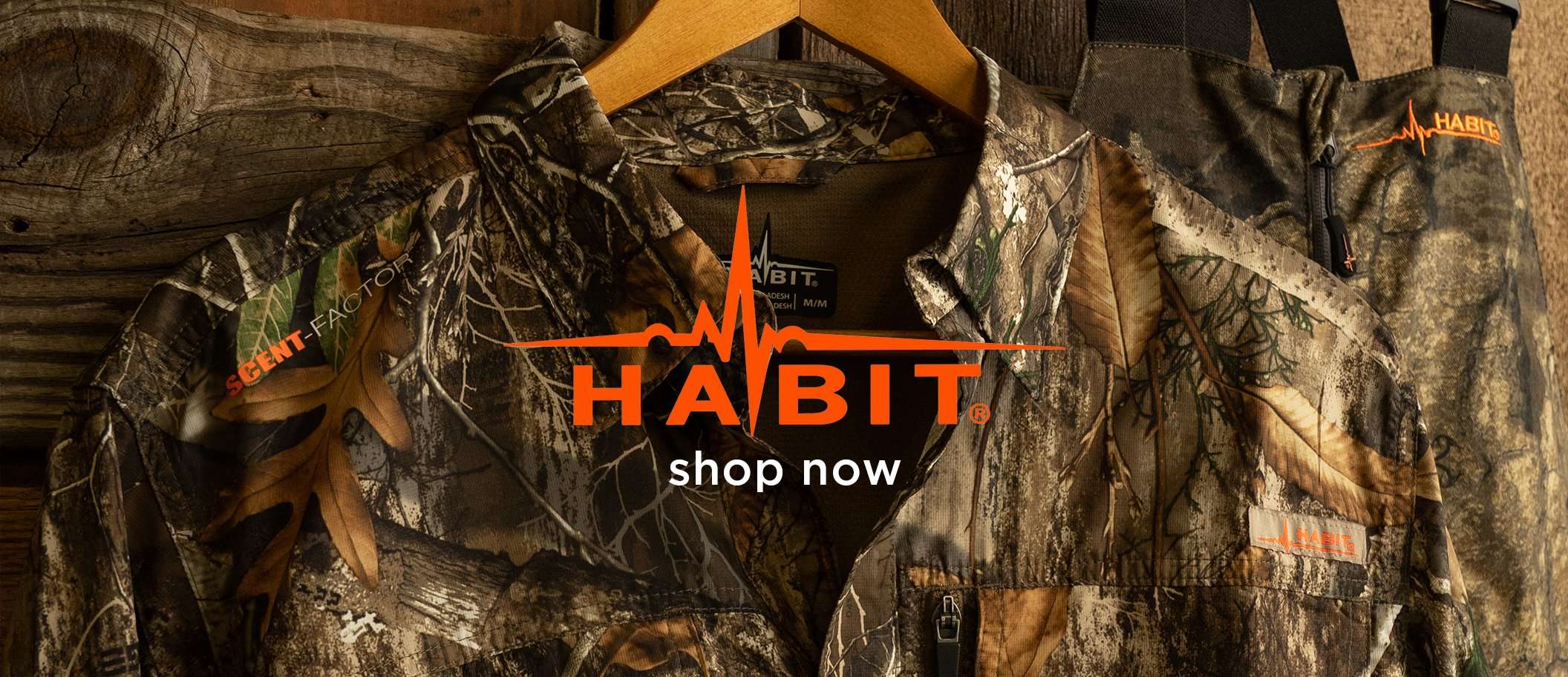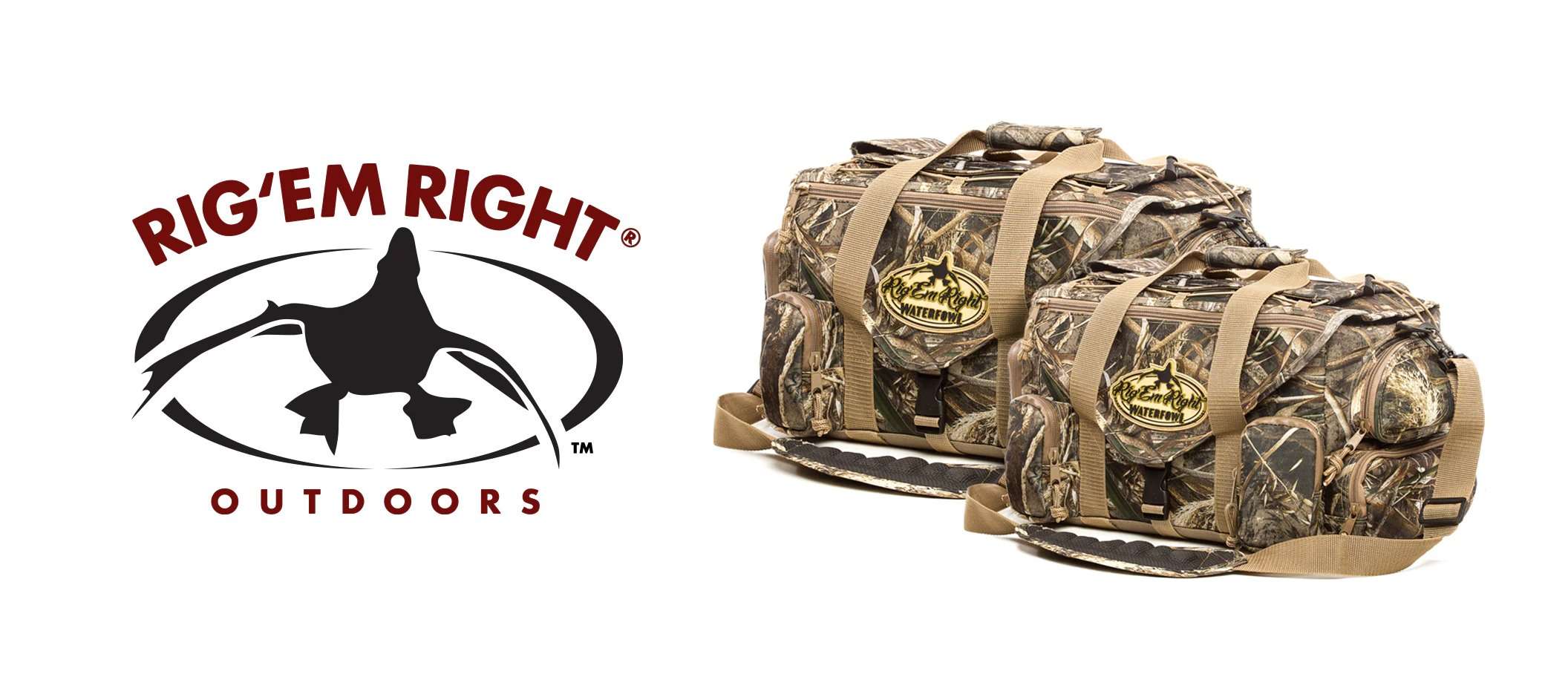Setting out a good dry-field spread can be tricky when hunting a mixed bag of birds. Here’s how the pros at a preeminent Canadian outfitter approach the problem
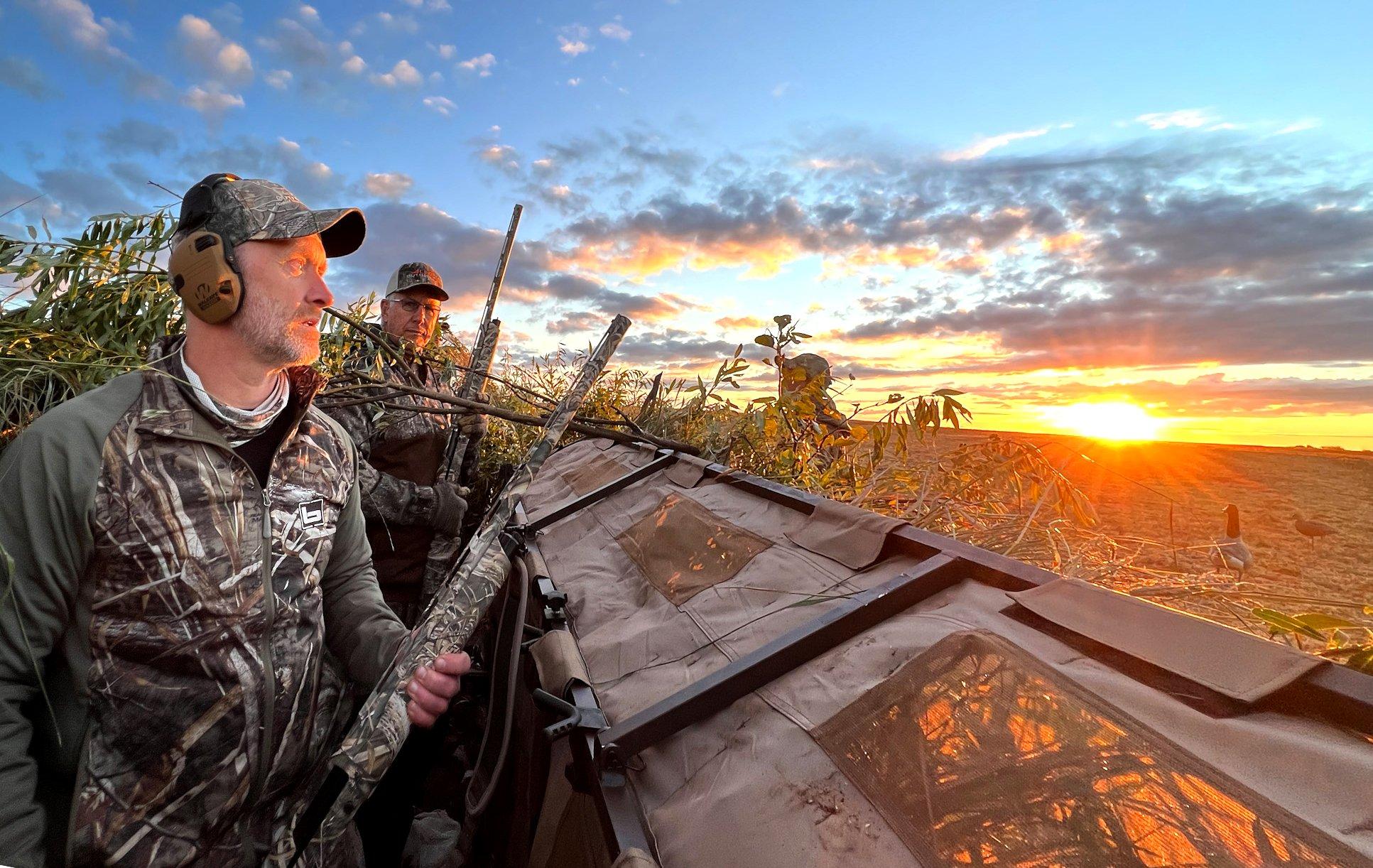
What’s on the menu — ducks, snows or dark geese? How you configure your spread can make or break a field shoot. Photo by Media Direct Creative
Waterfowl hunting creates many beautiful problems, not the least of which might be configuring an effective decoy spread when you’ll likely encounter several varieties of birds. And that’s never more evident than when mixing ducks, dark geese, and light geese in a dry-field hunt.
Sure, ducks and geese of both varieties often mingle together at hot feeds, but they can be finicky about how they associate. Ducks sometimes stick mostly to their own kind and try to stay ahead of aggressive geese when feeding. Dark geese often eschew the noise and clamor associated with large flocks of snows and blues, and they want nothing to do with spinning-wing decoys, which are necessary evils for decoying field ducks. So when a mixed bag is on the plate, smart hunters try to “match the hatch” and set spreads that provide maximum opportunity.
Don’t Miss: Our 20 Best Canada Goose Hunting Tips
That was on display recently when I traveled to Alberta in mid-October to hunt with Franchi at Dog ’N Duck Outfitting. The migration was on, and the area’s cut grain fields were full of mallards, cacklers, big honkers, specklebellies, and newly arrived snow geese. We’d target them all during the week, and the guides were ready.
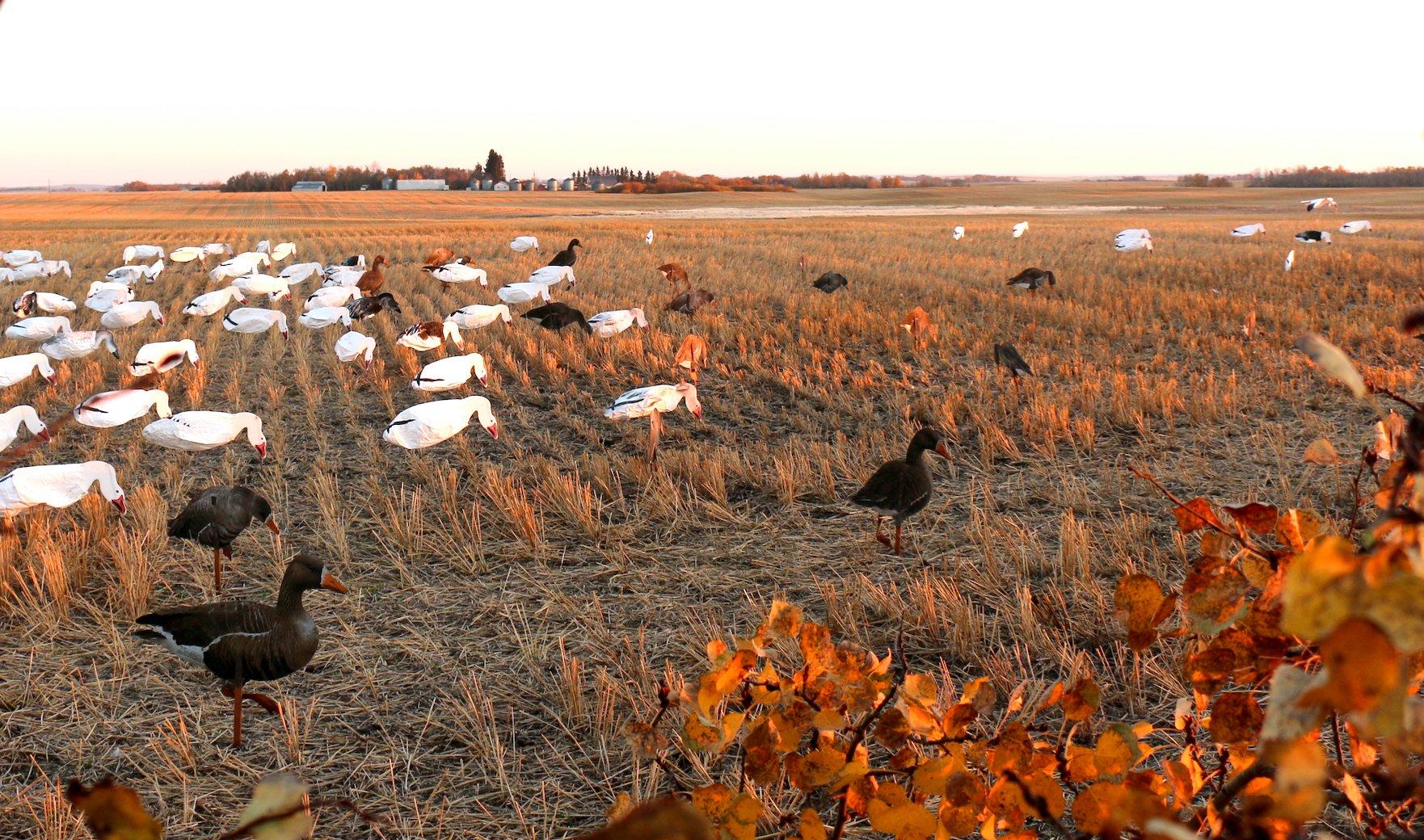
This snow-heavy spread worked well for light geese during a mid-October hunt in Alberta. Photo by Brian Lovett
The first morning, we set up A-frame blinds in a cut wheat field. Lots of snows, cacklers, and ducks were hitting the feed, so we hedged our bets and set out a snow-heavy spread of windsocks mixed with some Canada and duck full-bodies. The guides placed spinners behind the blind and were careful to switch them off as geese worked but on again when ducks were in the air. And despite the lack of wind, it worked as we took a great mixed bag with almost equal numbers of cacklers, specks, and snows, as well as a few ducks. That afternoon, we hit another wheat field to fill out our duck limit, and the spread changed to a scaled-down rig of mallards and honkers, with a couple of spinners front and center in the kill hole. The quick shoot produced 18 ducks and a bonus cackler.
On Day 2, dark geese were the predominant target, but the field had also held quite a few mallards. The guides went with a dark-goose-heavy spread with a few spinners in front of the shooters. The wind blew, and the spread came to life. Specks and cacklers arrived early, and most of the ducks came later, and the latter really keyed on the spinners. After 90 minutes of seemingly continuously running Hevi-Metal through our Franchi Affinity shotguns, we picked up and admired a limit of ducks and geese.
Day 3 dawned clear and windy, and everyone was excited for a great dark-goose shoot, including cacklers and big honkers. Again, the guides chose a honker-heavy spread mixed with a few ducks. As before, spinners went behind the blind, and the guides switched them on and off often to maximize our chances at Canadas. The action started fast and furious with good flocks of specks, but the honkers and cacklers arrived in large flocks and didn’t finish well, despite a brisk wind. Action remained steady for a couple of hours, and the guides continuously rearranged the spread, but no one seemed to mind when we “settled” for half a limit. Hey, not every day can be a banger.
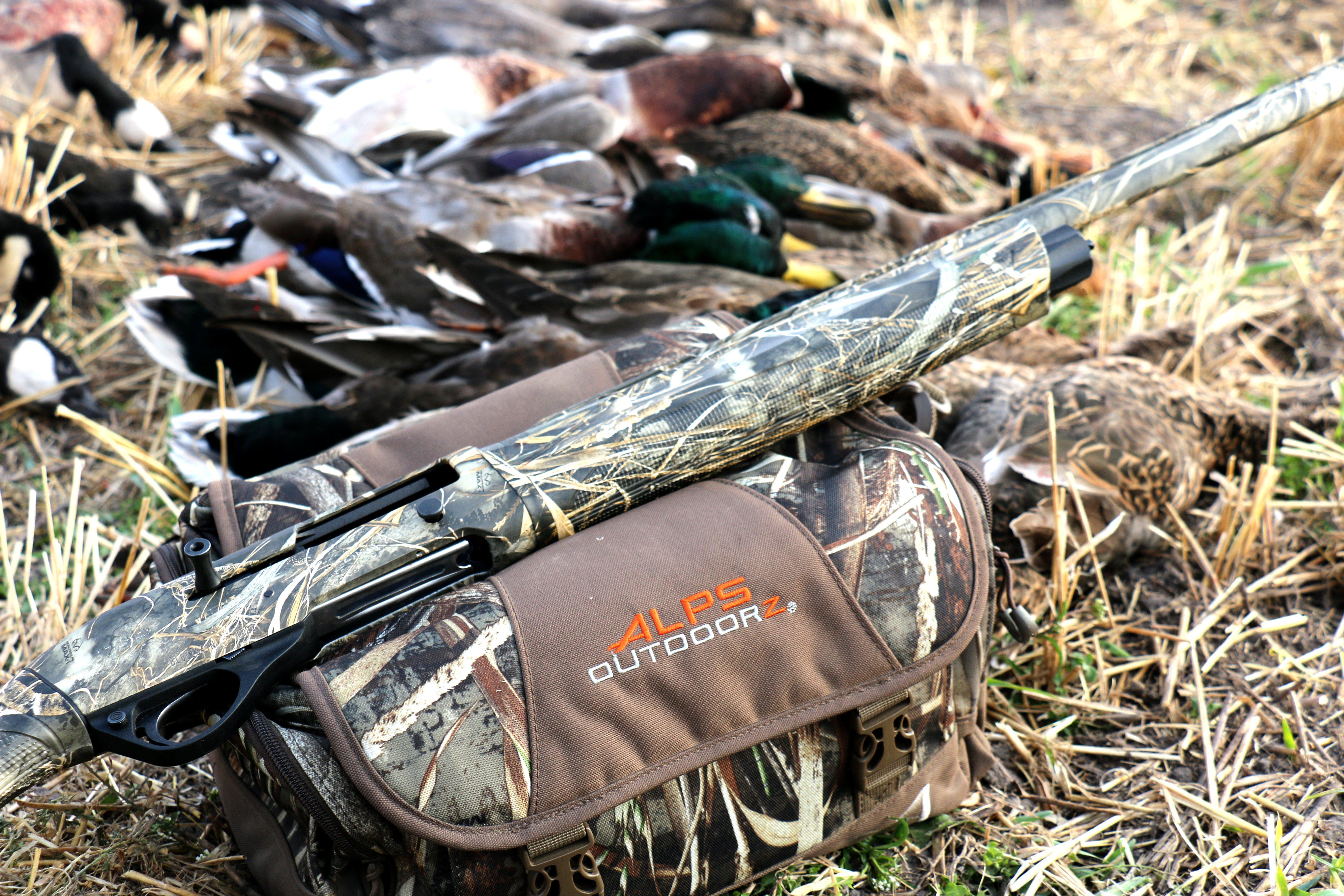
A well-executed dry-field shoot is one of waterfowling’s greatest pleasures. Photo by Brian Lovett
The main takeaway from the hunt seemed simple: Scout to determine what type of ducks and geese are using an area, envision how they might work the field, and set a spread that will appeal to the main types of birds and provide the most action. But be aware that nothing works all the time, so experiment to see what ducks and geese like that day, as it can change quickly.
Don’t Miss: Hunt Water Without Busting the Roost
And that lesson applies from the parklands of Alberta all the way down the flyways.




